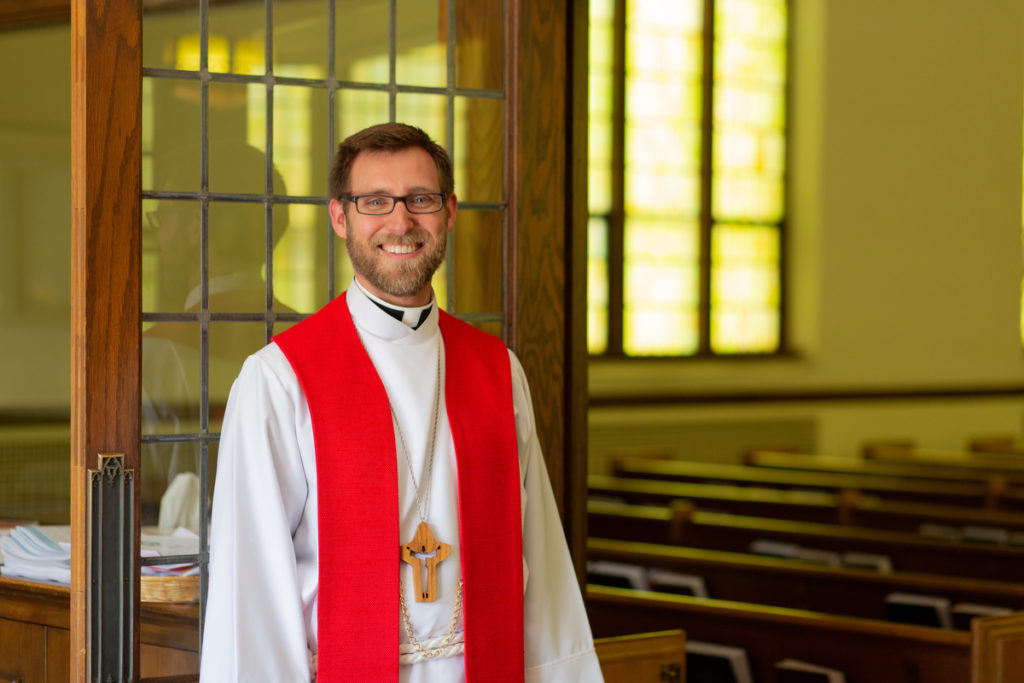Introduction
A question I am often asked by people is this – How did it happen? How did LGBTQ+ values, priorities, and agenda completely take over the ELCA, and so quickly? The purpose of this article is to show how the principles of community organizing were used most effectively to bring about this change.
The ELCA was formed in 1987 and began functioning as a church body in 1988. At the 2005 Churchwide Assembly traditional values prevailed, though just barely. It was not until 2009 that standards changed, and look at all that has happened since. For nearly twenty-two of the thirty-four years that the ELCA has existed, at least the officially recognized position was more traditional. It has only been during the last twelve years that revisionist views have prevailed. Actually and officially, the 2009 ELCA Churchwide Assembly only gave its blessing to (PALMS) publicly accountable, lifelong, monogamous same sex relationships. But in reality the ELCA has fully embraced the LGBTQIA+ agenda, values, priorities, and lifestyle. The ELCA has completely marginalized anyone who holds to any other view, and it is charging ahead at such a rapid pace that it makes you wonder whether anything could stop it except a total crash.
How did it happen? Part of the answer can be found in the fact that those who have been driving this are super focused and relentlessly dedicated. Part of the answer can also be found in the image of lily pads on a lake. Let’s say that the area of the surface of the lake that is covered by lily pads doubles each year. At first, the amount of increase is small. Then it becomes larger and more noticeable. Eventually lily pads are covering half of the lake. At that point and at that rate how much longer will it take for lily pads to cover the entire lake? One year.
Community Organizing
A more detailed answer can be found in the principles of community organizing and how that methodology has been used extremely effectively by such groups within the Lutheran community as ReconcilingWorks. ReconcilingWorks is an organization that since 1974 “has advocated for the full welcome, inclusion, and equity of lesbian, gay, bisexual, transgender, queer, intersex and asexual/aromantic (LGBTQIA+) Lutherans in all aspects of the life of their Church, congregations, and community.” Specifically we will be looking at how community organizing is the central approach employed by the Building an Inclusive Church Toolkit (BIC) developed by ReconcilingWorks in order to change peoples’ minds, turn the minority position into the majority position, and thereby take over the church. A link to the Toolkit can be found here.
Community organizing is also the primary approach employed by many other social justice activists – in the secular world as well as in the mainline church – in order to push for social change. It is popular because it works. Its techniques are effective, which is why and how the liberal/progressive movement has been so successful in taking hold of the mainline church and secular society.
Lutherans who hold to a high view of the authority of Scripture need to be aware of this process, so that we might develop and offer an effective response. Our failure to do so is a major reason why we are losing the battle – in the mainline church as well as in the secular world – to the LGBTQ+ agenda and other liberal/progressive concerns.
Texts
Here are some resources that you can use for further study. Fortress Press is “an imprint of 1517 Media.” 1517 Media is “the ministry of publishing of the Evangelical Lutheran Church in America.”
- Building an Inclusive Church Toolkit by Reconciling Works
- Doing Justice: Congregations and Community Organizing by Dennis A. Jacobsen (Fortress Press)
- Faith-Based Organizing by Charles Frederickson, Violetta Lien, Herbert E. Palmer, and Mary Lou Walther (Fortress Press)
- Faith-Rooted Organizing by Alexia Salvatierra and Peter Heltzel (Fortress Press)
Theological Education
Several ELCA seminaries offer classes and/or training in community organizing as part of the public theology and/or practical theology components of the seminary curriculum. At one ELCA seminary the “public church” curriculum has become the primary organizing principle around which the degree programs are structured. At other ELCA seminaries, efforts have been made and/or are in progress to expand the “public theology” focus, often at the expense of Biblical and confessional theological content. At one ELCA seminary a career in community organizing is one of the possible career pathways that the Master of Theological Studies (M. T. S.) degree leads to and prepares for.
Background
Community organizing methodology was developed by Saul Alinsky, a secular Jewish man, in the late 1930’s. Although Alinsky never identified as a socialist and/or a communist, he shared in common with them radical left (for his time) ideology, concern for the poor, and support for working-class communities and labor movements. Alinsky saw the need to fight for specific goals and used the principles and techniques of community organizing to achieve those goals.
Overview
Community organizing relies on two main things – strong relationships and shared values. Community organizers use these two things to change the minds of community members in order to get them to support a cause. In this way they build a coalition of supportive people. They then rally these people together and work together to press for change.
Community organizing begins with the following steps –
- Gather together a small core team of people who are already committed to your cause. These are the people who will start the process of pushing for change.
- Gather information about individual people as well as about the community. Build relationships with people. Learn about what they believe and why. Use what you learn to plan your approach. Identify key influencers and supporters who may be assets to your cause.
- Tell stories which evoke sympathy and support for your cause.
- Build common ground with your community (shared values and/or experiences).
- Educate the community in order to bring its members to your side.
- Once the initial prep work has been done, choose a course of action.
- Either a conflict approach, where the people in power are seen as your enemy. If so, confront them and take them down.
- Or a consensus approach, where the people in power are seen as people who can change their minds. If so, convince them to side with you.
Building an Inclusive Church Toolkit
The Building an Inclusive Church Toolkit from ReconcilingWorks builds upon, and relies upon, the community organizing method. Its approach assumes that there is already support from the leadership (clergy, church council, lay leaders, etc.) and that what needs to be done is to convince the rest of the community – enough to secure a 75% vote for RIC (Reconciling in Christ) status, as required by ReconcilingWorks.
As such, the proposed course of action is similar to the consensus approach. However, normally in community organizing the primary target is people in power (i. e. the clergy). However, in the BIT Toolkit, the primary target is the community at large (i. e. the congregation). The primary target’s minds need to be changed in order to accomplish the desired goal.
A Faith Community Assessment Survey is taken to evaluate the faith community’s current position(s). A link to the survey can be found here. Based upon the results, one of three timelines is suggested – Cautious, Moderatus, and Adventurous. The timetable ranges from six years to under one year. But no matter how long it may take, those working to bring about change are focused and relentless.
Whichever timeline is followed, the process is broken down into eleven steps, and there are six tools that are employed in order to work the process. These steps and tools are described in the Toolkit. Four of the six tools are Graceful Engagement, One-to-One Visits, Public Storytelling, and Scriptural Engagement.
Scriptural Engagement
It is interesting – and significant – that the sixth step – Providing Educational Opportunities – and the sixth tool – Scriptural Engagement – both come so late in the process. Typically, people who hold to a high view of the authority of Scripture would begin by focusing on what the Bible says. But that is not what the BIC Toolkit does. Instead the primary means of building community support are finding shared values – such as diversity, equity, inclusion, and welcome – and then engaging in carefully crafted storytelling in order to evoke sympathy and support for the cause. “Scriptural Engagement” does not actively come into play until the steps that build support from the community have already been completed.
It should not surprise us that “Scriptural Engagement” does not come until late in the process. The Bible does not support what ReconcilingWorks is trying to accomplish. The Scripture passages that are included in the BIC Toolkit include Luke 10:29-37 (the parable of the Good Samaritan), John 4: 4-26 (Jesus and the woman at the well), Matthew 22: 35-40 (the Greatest Commandment), Matthew 26: 51-52 (Peter’s cutting off the high priest’s servant’s ear), and Luke 23: 34 (one of the words of Jesus from the cross.) There is obviously no way that these passages support the LGBTQIA+ agenda. They do not even address LGBTQIA+ issues. No wonder support and agreement must be built in other ways rather than on the clear message of Scripture. Relying on the principle that feelings are often more important and more powerful than facts when it comes to convincing people to change their minds, the BIC Toolkit focuses on feelings-based approaches, such as storytelling, rather than on facts-based approaches, such as asking what the Bible says, in order to get people to come on board with the cause.
By the time the “Scriptural Engagement” tool comes into active use, the community’s minds and hearts have already been shaped into being LGBTQ+ affirming. Very little of Scripture is engaged with, and the purpose as well as the message of Scripture is distorted. The whole of Scripture’s message is reduced to three themes –
- We are called to love God and love our neighbors.
- It is not our place to judge.
- Treat others as you would want to be treated.
Specific passages from Scripture which appear to support these themes are selectively chosen in an effort to demonstrate that these ideas form the fundamental message of Scripture.
Other themes of Scripture – such as sin and our need for God’s forgiveness, God’s command that we repent of our sins, our need to obey God, and the Bible’s instructions regarding holy living – are minimized or avoided entirely.
The prescribed approach to the so-called “clobber passages” (the passages that clearly speak against same-sex sexual behavior) is to avoid them, or else to minimally engage with them only as needed, until the three themes mentioned above are firmly established in the hearts and minds of the community as the primary message of Scripture. Only then are the “clobber passages” engaged with, under the assumption that, if indeed the primary message of Scripture is one of welcome and inclusion, and the “clobber passages” are neither welcoming nor inclusive of LGBTQ+ identified people who are engaged in same-sex sexual behavior, then either we have misunderstood these “clobber passages” or the “clobber passages” must be wrong in some way.
With so little engagement with Scripture, and with what little of Scripture is utilized being so badly misrepresented, people are left with an understanding that is far from biblically sound.
I will be completing this article in my February Letter from the Director. In that second part I will tell more about how the Building an Inclusive Church Toolkit uses the principles of community organizing to change people’s minds and get them on board with the cause. I will also offer several suggestions as to what those with a high view of the authority of Scripture need to do and can do in order to provide a viable, effective, and convincing alternative.


























Great stuff yet again, Dennis. I also observe about those doing community organizing how they seed and slowly grow a crescendo of fear in their disciples. That fear, replacing hope, is motivational. And like the lily pads, begin to take over while appearing benign. Couple this with too many folk on the other side being wimpish by going along to get along… the equivalent in my opinion of trying to pet a roaring lion, and it’s little wonder things have gone so far, so quickly. Unfortunately, my guess is this ‘virus’ has not yet crested. Blessings.
Mike Lubas
Rochester NY
I agree. This “virus” has not yet crested, and in the end it will be destructive.
Thanks for the great summary of how the ELCA has gotten to this point. I was a delegate at the 2009 Assembly and attended many evening meetings from the other side, Word Alone. Little did I realize then how bad this would become in such a short period of time.
Thank you for your many years of being a part of the reform/renewal movement within the Lutheran church. Yes, it is shocking how bad it has gotten and so quickly.
Pastor Nelson:
First, let me commend you on the excellent work…….as in past reports Let me give a BIG boost to encouragement leading you to and through the
vvork you anticipate for Part 2 in February next.
In my experience this has not happened ” quickly”. You know I served an Interim EX Dir in the former DCS Division as Bishop Hanson came to ELCA
Presiding Bishop and Rev. Charles Miller moved up to be his COO—-work on the “second try” post 1988 (these matters came up early n in ELCA and were quickly set aside by the strong reaction of the congregations) for a so called “Sexuality Statement” reported in administratively to DCS. I could see the beginning……..three to five lily pads then .
I support your observation to the effect that Lutherans turn to scripture FIRST as we recall when this matter came up before………..the Lord raised up
“The WORD ALONE” from and following our 1517 origins.
As we learn in the clinic…”In HIS own time–In HIS own way ! ! !
Pastor L. James Wylie
Advocate Health Care (Retired)
Dear Jim –
Thank you for the fine leadership that you have provided for the Lutheran church over many years. You saw what was happening when it was only three to five lily pads. It is truly a source of great sorrow to see where the ELCA has ended up and the direction in which the ELCA insists on going – no matter what.
My ELCA pastor, a new seminary graduate, said this:
11/12/21 “Jesus came to bring conflict & radical change.” That’s not the Gospel that I’ve heard in that same Church for over 60 years. That’s not the Jesus or God that I’ve met in the Scriptures. It’s scary that the ELCA FaceBook page is filled with people that tell their own ELCA members to leave and “find another church; not “All Are Welcome”.
The ELCA’s 2009 human sexuality social statement said that a variety of views, including traditional views, would be welcome within “this church.” But that is not the way it is happening. In most situations traditional views and those who hold them are not welcome.
There is a time when you just have to move on.. That time has come for the ELCA. I had to leave my ELCA church that I was a member of from the time of baptism for reasons other than the cultural marxism that we are now facing. I went to another ELCA church only to find it completely overrun with spirit of the age doctrine. I have moved on. I will never be part of an ELCA church again.
13If the home is worthy, let your peace rest on it; but if it is not, let your peace return to you. 14And if anyone will not welcome you or heed your words, shake the dust off your feet when you leave that home or town. 15Truly I tell you, it will be more bearable for Sodom and Gomorrah on the day of judgment than for that town.
Day of judgement is never discussed in the “new” church.
Thank you for sharing. May the Lord continue to bless you as you serve Him.